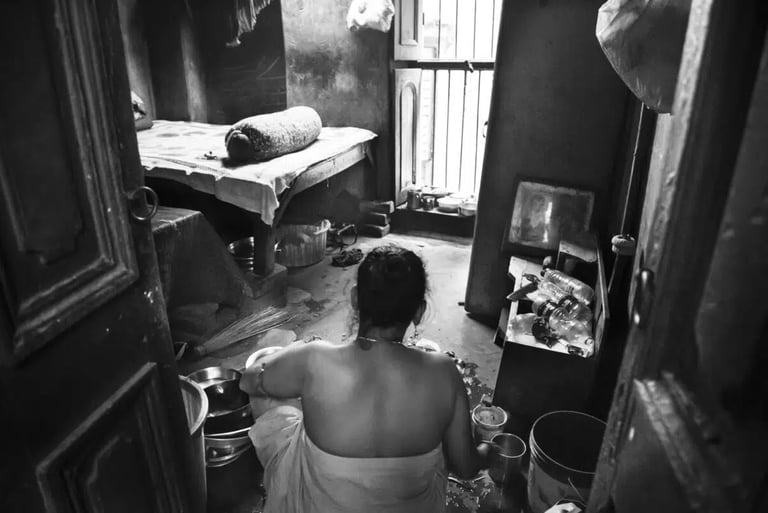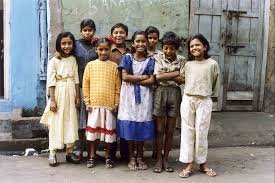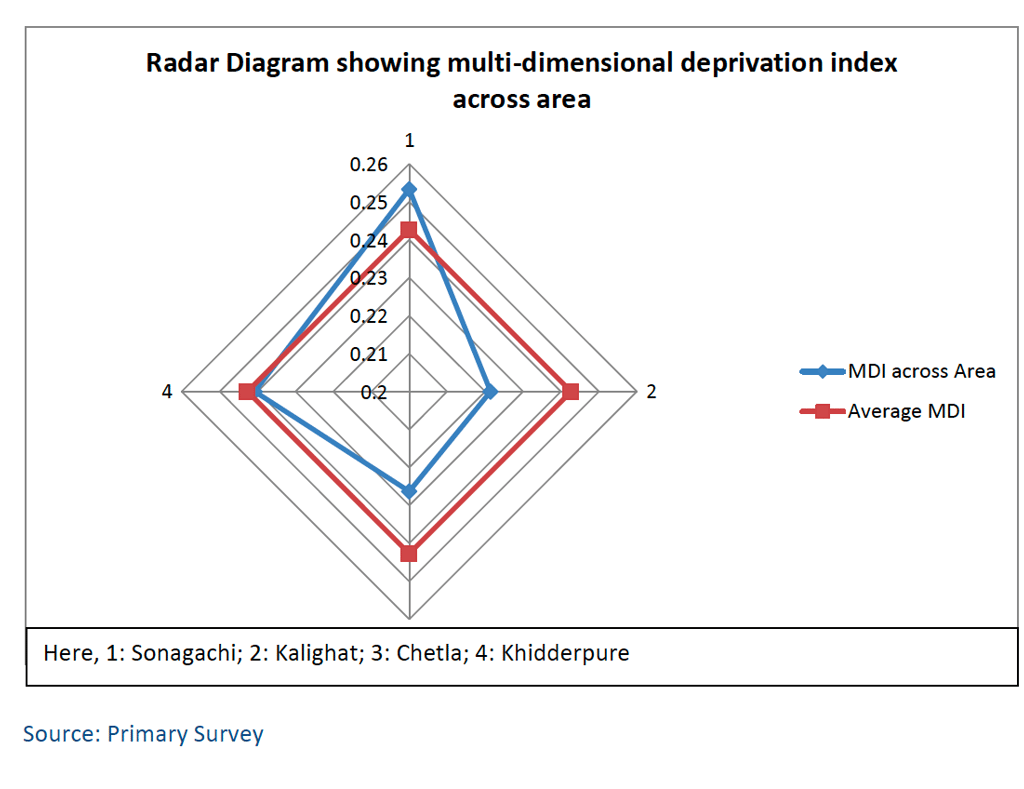
Shadows of Sonagachi
Sheds light on the dark alleys of Kolkata's sex workers, revealing surprising insights about their financial habits, educational aspirations for their children, and the hidden deprivation they face. Discover how these mothers navigate stigma while striving to create better futures for their next generation.
Mohar Chaudhuri
7/18/20193 min read
As I ventured into Sonagachi—Asia's largest red-light district—with a paper questionnaire and unwavering determination, I found myself in an environment both challenging and revealing. Through careful and compassionate interviews with sex workers about their children's lives, we uncovered disturbing patterns of school dropouts, child marriage, child labor, and abuse—systemic issues perpetuating cycles of vulnerability.
This research conducted by undergraduate economics students from Jadavpur University offers a rare window into the lives of sex workers in Kolkata and the unique challenges faced by their children. The study stands out for its focus on both the financial inclusion of sex workers and the educational outcomes of their children across four red-light districts in Kolkata.
Study Background and Methodology
The research team, supervised by Dr. Tanmoyee Banerjee from Jadavpur University's Economics Department, conducted extensive surveys between November 2018 and February 2019. They gathered data from 227 sex workers who were mothers across four red-light areas:
Sonagachi (largest sample with 127 respondents)
Kalighat (35 respondents)
Chetla (34 respondents)
Khidderpore (31 respondents)


Captured by Lisa Kristine
We designed our survey to capture three critical dimensions: basic demographic information of the sex workers, details about their children's education and aspirations, and the financial circumstances of these women.
The financial realities of sex workers revealed both struggles and surprising resilience. Monthly incomes varied dramatically, ranging from just ₹1,500 to ₹25,000, with younger women typically earning more than their older counterparts. Despite these modest and unpredictable earnings, most women maintained savings habits, primarily through formal public banking institutions. Interestingly, few utilized formal loans despite having bank accounts, instead turning to informal lenders when needed.
Many sex workers demonstrated financial foresight through asset ownership, typically acquiring land or homes in their native villages. Curiously, asset ownership positively correlated with paying rent, reflecting a practical strategy: investing in property in their hometowns while maintaining rented accommodations in the brothels where they worked.
When examining children's education, we found encouraging patterns alongside concerning challenges. The vast majority attended government schools, with 306 out of 382 school-going children enrolled in public institutions, and 247 receiving mid-day meals.
Notably, these mothers generally avoided gender discrimination in educational support, showing equal commitment to both sons' and daughters' futures.
Perhaps most striking was the absence of correlation between a mother's education and her child's educational achievement. Women with no formal schooling themselves often demonstrated fierce determination to secure educational opportunities for their children. Higher-income sex workers were more likely to support extracurricular activities, recognizing the value of well-rounded development.


Children of Sonagachi pose together outside a building in Kolkata's red-light district for the cover of a 2004 Indian-American documentary film Born into Brothels
Child marriage and school dropouts emerged as significant concerns. Of 128 girls in our study, 53 were married, many before reaching 18 years of age—particularly in Sonagachi and Kalighat. School dropout rates were highest in Sonagachi, with the primary reasons cited as "bad influence/own decision" and marriage. Interestingly, most children who discontinued education did not immediately join the workforce.
Despite these challenges, the aspirations these mothers held for their children remained remarkably high. Most hoped their children would pursue higher education, with securing stable employment being the second most common aspiration. These dreams persisted regardless of the mother's own educational background.
To better understand the multifaceted challenges these children face, we developed a deprivation index based on seven key indicators, including addiction, school dropout, lack of extracurricular activities, living conditions, financial security, and labor participation. Our analysis revealed that 49.4% of children were multidimensionally deprived, scoring over 40 on our 100-point scale. Sonagachi showed the highest deprivation rate at 52.2%, with children experiencing hardship across multiple dimensions simultaneously.


Based on these findings, we've proposed several targeted interventions. These include establishing rehabilitation and hostel facilities for children who cannot safely remain in brothels, implementing minimum wage protections, strengthening enforcement of child protection laws, developing mobile banking services tailored to sex workers' needs, and launching comprehensive destigmatization efforts.
This research makes several valuable contributions to understanding marginalized communities. It highlights how sex workers prioritize their children's education despite limited opportunities in their own lives. It demonstrates that financial inclusion exists but remains incomplete. It reveals how children face complex deprivation extending beyond simple income measures. And it confirms that social stigma continues to present significant barriers to inclusion.
Despite overwhelming challenges, these mothers maintain hopeful aspirations for their children's futures. However, targeted policy interventions are urgently needed to address structural barriers and ensure these children have equitable opportunities. By recognizing both the agency of sex workers as mothers and the systemic challenges they face, we can develop more effective and compassionate support systems for these vulnerable communities.
Connect with me!
© 2025. All rights reserved.
Whether you're a seasoned data scientist, a fellow learner on this journey, or someone curious about what data can reveal, I'd be delighted to connect. Please drop me a message.